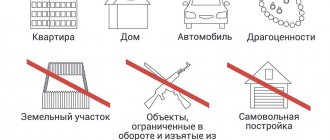Bookmarked: 0
What is robbery? Description and definitions of the concept.
Robbery is a type of theft of property, which is distinguished by the fact that this theft is carried out openly, which means in the presence of strangers or the owner of the thing. In addition, unauthorized persons or the owner of the property realize that a crime is being committed in their presence. Robbery may be accompanied by violence that is not dangerous to health or life. In the criminal legislation of many countries, robbery is not considered as a separate crime, and the concept of robbery is included in the theft or robbery. The robbery can be considered completed if the perpetrator has taken the property and has the opportunity to dispose of it for his own purposes or for the purpose of sale.
Robbery (Article 161 of the Criminal Code of Russia) is the open theft of someone else's property. It can be expressed in the theft of property, which was committed without violence against the person or with the use of violence that is not dangerous to life and health. Thus, robbery is different from theft (the secret theft of someone else's property) and robbery (an attack with the aim of stealing someone else's property, which involves the use of violence dangerous to life or health, or the threat of its use). In many countries, robbery is not identified as an independent crime, but is covered by theft (hidden theft of property) or robbery (theft of someone else's property with the use of violence).
The robbery is considered completed when the property is confiscated and the perpetrator is given a real opportunity to use it or dispose of it at his own discretion (for example, to use the stolen property for his own benefit or for the benefit of other persons, to dispose of it for personal gain in any other way.
Modern criminal law
In accordance with Article 161 of the Criminal Code of the Russian Federation, robbery is the open theft of someone else's property. Robbery is committed intentionally and therefore cannot be classified as a crime committed through negligence.
Open theft of someone else's property is theft committed in the presence of the owner or other owner of the property, or in full view of strangers, if the person who committed this crime realizes that the persons who are present understand the illegal nature of his actions, regardless depends on whether or not they take measures to suppress such actions.
The object is ownership. The subject of the crime is movable property.
The objective side of a crime includes 3 components: the act (open theft of property), the consequence (causing property damage to the owner or other owner of the property) and the cause-and-effect relationship between the act and the consequence.
The subjective side is characterized by guilt in the form of direct intent having a selfish goal.
The subject is a sane individual who has reached the age of 14.
Qualified robbery offenses:
- Which was committed by a group of persons by prior conspiracy using penetration into a home or other premises;
- Which was committed with the use of violence that is not dangerous to human life and health;
- Which is done on a large scale.
Particularly qualified robbery offenses:
- Which is committed by an organized group;
- Which is made on an especially large scale.
Crimes against property are very diverse, and along with old, well-known and defined in the legal literature and legislation, new phenomena appear that reflect the specifics of the current level of economic development and technological progress. Crimes against property and the fight against them turn into one of the most pressing problems in modern legal practice. The crisis in the economy, which is associated with the complication of property relations, and also due to the falling standard of living of some citizens of our country, is the reason for the aggravation of the criminological situation in general and also the growth of claims on other people's property in particular. Crimes against property and the fight against them are becoming one of the most pressing problems of modern legal practice.
Robbery, being one of the types of crimes against property, can be classified as, firstly, quite dangerous, and secondly, quite well studied methods among such crimes. The Soviet Criminal Codes of 1922 and 1926 began to link robbery with “the open theft of someone else’s property in the presence of a person possessing, using or in charge of it, but without violence against the person or with violence not dangerous to the life and health of the victim.” The Criminal Code of the KAZSSR of 1959, which provided increased protection of socialist property, begins to distinguish between claims to state, public property and personal property of citizens, among them robbery, having previously divided it depending on these objects of encroachment. The Criminal Code of the Republic of Kazakhstan of 1997 provides for the legislator, without establishing a distinction between state and private property, to place unlawful attacks against property, including robbery, in the section “Crimes against property.”
Street
Street robbery is one of the most common types of open theft.
This is explained by the fact that it is difficult to find the criminal, since despite the openness of the seizure of other people's property, eyewitnesses rarely remember the appearance of the culprit.
Also, such robberies are more difficult to prevent, since they often occur suddenly: robbers like to use the effect of surprise.
As a rule, street robberies are committed without preparation , but in practice there are also pre-planned cases. Street robberies can take place either in a deserted place or in a place full of people.
Reference.
The most common way of committing a robbery on the street is a jerk, that is, when something is suddenly snatched from the victim’s hands, torn off his head, etc.
In most cases, such a jerk does not involve the use of violence against the victim. But situations also arise when the robber makes a jerk with such force that physical pain is caused to the victim. In this case, we are talking about the use of violence that is not dangerous to life/health (clause “d”, part 2 of article 161 of the Criminal Code of the Russian Federation).
Let's look at an example from judicial practice:
At about 5 a.m., Bibikov approached a woman he didn’t know and tried to snatch her bag. However, he was unable to pull the bag out the first time, so he began to pull with greater force. This caused the handle of the bag to break, he grabbed it and ran away. The bag contained property worth 44,000 rubles.
In this case we are talking about the most common case of street robbery - open theft in a deserted place by jerking.
The Zheleznodorozhny District Court of Khabarovsk qualified Bibikov’s actions under Part 1 of Art. 161 of the Criminal Code of the Russian Federation and sentenced him to imprisonment for 2 years.
Recommended reading:
Concept and signs of robbery
Criminal legal characteristics of robbery
The difference between robbery and related compounds
Objective signs of robbery
According to the Criminal Code of the Republic of Kazakhstan, robbery is “the open theft of someone else’s property” (Article 178 of the Civil Code), which is committed without violence, or combined with violence, which is not dangerous to human life and health. An open theft can be called a theft that is committed in the presence of the victim or persons in whose custody or protection the property should be, or in the presence of strangers, when the person who commits the theft realizes that those watching understand the nature of his actions, but do not react in any way to this circumstance. In addition, the issue of the open nature of the theft of property is decided on the basis of a subjective criterion, this means they proceed from the subjective perception of the situation by both the victim and the perpetrator. In accordance with the explanation of the Supreme Court of the Republic of Kazakhstan, given in 2003, “kidnapping is open (robbery) if the perpetrator was aware that he was committing it in the presence of victims or other persons and that they understand the nature of his actions. A typical robbery is a “snatch”, i.e. sudden seizure of property by tearing off a headdress, snatching a briefcase, bag, etc. from the hands. (Bulletin of the Supreme Court of the Republic of Kazakhstan, 1993, No. 4). The criminal relies on the surprise of his actions for the victim and others, on their delayed reaction, confusion, and fear. He does not hide his intention to take possession of other people’s property; his actions are more daring and defiant than during theft.”
The concept of robbery in the Criminal Code
Note 1
Robbery is the open theft of someone else's property (Part 1 of Article 161 of the Criminal Code). A characteristic feature of robbery is the open taking of someone else's property. The criterion for determining an open nature is the subjective perception of the method of crime by the perpetrator and the victim themselves. Theft, in contrast to robbery, is the secret non-violent seizure of property with its use for one's own benefit or for the benefit of third parties.
Open actions aimed at taking possession of property for the purpose of its destruction or for its temporary use, or in connection with an alleged or actual right to this property, or committed out of hooligan motives do not constitute robbery.
Robbery includes the taking of property both in the presence of victims (legal owners or possessors), under the protection or control of which it is located, and of unauthorized persons. The specific object of robbery is property relations. The owner has the rights of ownership, disposal, and use of property (Part 1 of Article 209 of the Civil Code). When a robbery is committed, the owner's rights to own and use the stolen property are violated.
Are you an expert in this subject area? We invite you to become the author of the Directory Working Conditions
The direct object of robbery is the right of ownership of a specific person to certain property. The subject of robbery is things in civil circulation (property, securities, money). Items that cannot be stolen openly are not items of robbery.
The objective side of robbery is expressed in the open gratuitous seizure of someone else's property in favor of the thief or other persons who caused damage to the owner (owner of the property). It does not matter: when the taking of property began to be open in nature (initially, as a result of the escalation of theft, which began as theft and grew into open theft); Whether or not during the theft there was actual resistance to the seizure of property from any side. Open theft, committed with illegal entry into a premises, home, or storage facility, is the basis for recognizing robbery as a qualified type.
Robbery is a material element of the crime. It is considered completed from the moment when the perpetrator has seized the property and acquired a real opportunity to dispose or use it at his own discretion.
Finished works on a similar topic
Course work Criminal-legal characteristics of robbery 460 ₽ Abstract Criminal-legal characteristics of robbery 240 ₽ Test work Criminal-legal characteristics of robbery 240 ₽
Receive completed work or specialist advice on your educational project Find out the cost
Criminal prosecution
To bring a person to criminal responsibility and find him guilty, it is necessary to establish that the actions he committed contain elements of a certain crime, which, according to Kazakhstan criminal law, is the only basis for criminal liability. Each crime contains characteristics: the object of the crime, the objective side of the crime, the subject of the crime and the subjective side of the crime.
Consideration of these issues in relation to the elements of robbery will allow us to define the concept of this crime. Robbery is a crime that can encroach on two dissimilar objects. On the one hand, the immediacy of the object of robbery is someone else's property. The second object of robbery is present if the robbery was committed with violence against the person. When committing robbery with violence (Part 2 of Article 178 of the Criminal Code of the Republic of Kazakhstan), the object of the crime is not only property, but also the person (bodily integrity, personal freedom).
Violence during robbery can be a method of taking someone else's property. That is why this violent method of taking possession of someone else’s property, robbery with violence, appears to be an increased social danger when compared with robbery without violence, which should be taken into account by the legislator, who will consider robbery, which is combined with violence, as theft, which was committed under aggravating circumstances.
But, most importantly, the main thing when committing robbery with violence will not be the violence itself, but the desire of the perpetrator to use violence to possess someone else’s property. That is why the legislator, based on the final goal of this crime - to take possession of someone else's property, defines liability for robbery in a section of the criminal code as a crime against property.
Thus, the direct object of robbery may be someone else’s property, and during the commission of robbery with violence, in addition to property, the direct object of this crime will also be a person (bodily integrity, personal freedom).
Apartments or houses
An apartment (or house) is a residential premises, therefore, illegal entry into it for the purpose of open theft of someone else’s property is considered as a qualified robbery - clause “c” of Part 2 of Art. 161 of the Criminal Code of the Russian Federation.
Among burglars, open theft of property from an apartment (or house) is not as common as secret seizure. This can be explained by the fact that attackers in such crimes strive to remain unnoticed, since any miss means failure for them. Unlike street robberies, criminals have nowhere to run if their actions are discovered.
It often happens in practice that an attacker initially plans to secretly steal from an apartment (or house) and hopes that his actions will not be detected by the owner. However, due to insufficient preparation or lack of a plan, his actions become noticeable to the owner of the residential premises (for example, the criminal thought that no one would be at home, but was mistaken; the criminal did not calculate the time and the owner returned home, etc.).
In this case, we are talking about the escalation of theft (secret theft) into robbery (open theft), that is, the final qualification of the actions will not be under Art. 158 of the Criminal Code of the Russian Federation, and according to paragraph “c” of Part 2 of Art. 161 of the Criminal Code of the Russian Federation.
Forms of ownership
The Civil Code of the Republic of Kazakhstan distinguishes the following forms of ownership: 1) property of citizens and legal entities (except for state and government enterprises and institutions financed by the owner); 2) state property;
All forms of property from the point of view of their legal protection are equivalent and are subject to equal protection by the norms of criminal law. This provision, which is fundamentally important for criminal law, is based not only on the norms of the Civil Code of the Republic of Kazakhstan, but also on the direct instructions of the Constitution of the Republic of Kazakhstan: “In the Republic of Kazakhstan, private, state and other forms of property are recognized and protected equally.”
The starting point when considering theft is its subject, i.e. property. Unlike the object, which is property relations, the subject of theft is always material, since it serves as part of the material world. Achievements of the human mind (ideas, views) that lack the attribute of a thing cannot be the subject of theft. Due to the absence of a property attribute, it cannot be the subject of theft of electrical or thermal energy.
The subject of theft can be any thing of the material world, the creation of which involved human labor and which has material and spiritual value. The expression of value is the cost of a thing, its monetary value.
Natural resources in their natural state cannot be the subject of theft. At the same time, the seizure of forest products on forest plots, fish, wild animals and poultry, which are raised in special reservoirs, nurseries and enclosures, constitutes theft. Property that represents a find or treasure, as well as property that has fallen out of the possession of the owner or another owner due to any accidental circumstances, cannot be considered the subject of theft. However, taking possession of property that was stolen by another person (theft of stolen goods) constitutes theft. Theft will occur in the event of possession of a thing forgotten by the owner in a place known to him (in a carriage compartment, in an institution building), if the culprit realized that the owner would return for this thing
The subject of theft can also be property seized from civil circulation. However, if the possession of this property poses a threat to public safety or public health (weapons, poisons, narcotic drugs, radioactive substances), then the act is qualified not as a crime against property, but under Art. 248 of the Criminal Code of the Republic of Kazakhstan
Jar
You can often find news about bank robberies in the media. In some cases, robbery refers not only to cases of robbery, but also to cases of robbery or theft.
Important! Bank robbery can only be called the open theft of someone else's property (mainly citizens' deposits/money, precious metals, etc.), committed without the use of weapons, as well as without the use of violence dangerous to life/health.
For clarity, let’s look at an example from judicial practice:
Kozlov and Mikhailov agreed in advance to rob the bank. They turned off the power and, taking advantage of the effect of surprise, entered the bank premises wearing helmet masks so that their identities could not be identified.
Mikhailov, according to the agreement, remained to monitor the entrance, and Kozlov walked towards the cash desk, where the cash was kept, and sprayed gas in the bank premises using a gas canister.
After that, he tried to steal the money, but was unable to, because as a result of the gas spray, he suffered a chemical burn to the mucous membrane of his eye.
Since the criminal intent of Kozlov and Mikhailov was not completed, that is, they were unable to steal money from the bank, the Aldan District Court of the Republic of Sakha qualified their actions as attempted robbery of a bank on an especially large scale (part 3 of article 30 + clause. “b” part 3 of article 161 of the Criminal Code of the Russian Federation) and sentenced them to 6 years in prison.
The objective side of robbery
The objective side of robbery is characterized by active actions consisting of open, non-violent seizure of someone else's property. The objective side of a crime, as is known, consists of a socially dangerous action or inaction, a criminal result, a causal relationship between them, as well as a number of circumstances characterizing the action or inaction of the criminal (method, place, time and setting of the crime).
A characteristic feature of the objective side of the robbery is the method of its commission. The objective side of robbery is the external expression, the objective embodiment of the subject’s conscious intention to openly confiscate and seize someone else’s property in order to treat it as one’s own.
Being one of the forms of criminal behavior, a predatory act is an illegal act, the essence of which is an open physical impact on objects of external reality (other people's property, money), consisting in their movement and seizure. If we are talking about violent robbery, then the impact on objects of external reality is preceded (accompanied by it or carried out with the aim of retaining the captured objects) by an action, the essence of which is a physical or mental impact on the personality of the person (victim). It can be expressed in the form of threatening words, gestures, body movements (for example, when threatening), pushing, hitting, depriving the victim of freedom, etc. Specifically, robbery, as a form of theft of property from the objective side, is expressed in actions that represent open non-violent or combined with violence that is not dangerous to the life and health of the victim, theft of property (Article 178 of the Criminal Code of the Republic of Kazakhstan).
The relatively high social danger of robbery is determined primarily by the content and nature of the unlawful actions of the perpetrator, and the method of committing an attack on the property relationship. By committing an open theft, seizing property by illegal means, knowingly in front of the persons in charge of this property, guarding it or owning it, or in the presence of strangers who are aware of the criminal nature of the actions of the culprit and are capable of preventing him, the robber thereby shows special insolence, which causes demonstrative disregard not only for the victim and eyewitnesses, but also for the legal order established in society.
We briefly reviewed the definition of the term robbery, history, modern criminal law, objective signs of robbery, forms of ownership, criminal prosecution, the objective side of robbery. Leave your comments or additions to the material.
Qualified types of robbery
According to the Criminal Code (Part 2 of Article 161), qualified types of robbery include:
- robbery by prior conspiracy committed by a group of persons;
- robbery committed by an organized group of persons;
- robbery accompanied by illegal entry into a premises, home or storage;
- robbery committed with the use (threat of use) of violence that does not pose a danger to health or life;
- robbery committed on a large (or especially large) scale.
The content of certain qualifying signs of robbery is identical to some of the signs of theft.
Violent robbery is accompanied by the use (threat of use) of violence that does not pose a danger to human health or life: beatings; violent actions that caused pain but did not lead to health problems or loss of ability to work, the introduction of intoxicating substances that do not pose a danger. The nature of violence is physical (the use of force directly against another person against his will) and/or mental (the threat of using force) in nature.
Mental violence is present and real. When confronting a robber, the threat of violence is carried out immediately. Mental violence has a definite (threat of imprisonment, tying up, beating, etc.) or indefinite (“it will be bad”, “it will be worse”, “you will not be happy”, etc.) character. The issue of qualification in case of an uncertain nature of the threat is decided taking into account all the factual circumstances of the case (time, place of commission of the criminal act, number of offenders, subjective perception of the nature of the threat, the essence of the objects with which the victim was threatened, etc.).
An unfinished theft can transform into a robbery. If the actions were started as theft, but they were discovered by the victim or other persons, then such actions qualify as robbery if they were continued by the perpetrator with the aim of taking possession (holding) of the property.
Without aggravating circumstances
Part 1 of Article 161 of the Criminal Code of the Russian Federation – simple robbery without any aggravating circumstances. Such theft is committed by the criminal alone, openly and without any use of violence against the victim.
An example of such a robbery would be a situation where a criminal rips a fur hat off a citizen on a sparsely populated street and runs away. Or, for example, a motorcyclist at speed snatches a bag from a woman walking along the sidewalk and drives off. In these cases, the robber does not encounter resistance from his victim or the people around him, and the theft occurs without violence.
- The subject of such a crime can be an individual of sanity and who has reached the age of 14 years.
- When discussing the subjective side of robbery, we can only talk about direct intent and the motive of self-interest. The goal of the criminal is illegal enrichment at the expense of another person or organization.
- The object of the crime is property relations. Any other person's property is considered an item.
- The objective side of simple robbery: open non-violent seizure of someone else's property.
You can read more about the components of the robbery here.
The robbery is considered completed when the criminal has taken possession of someone else's property and has the opportunity to dispose of it at his own discretion (whether this disposal occurs or not does not matter: only the possibility of it is important).
Responsibility
For unskilled robbery, criminal law provides for the following sanctions.
- Works:
- correctional for up to 2 years;
- mandatory (maximum 480 hours);
- forced (up to 4 years).
- Arrest for up to six months.
- Restriction of freedom from two to four years.
- Imprisonment in places of deprivation of liberty (MPL) for up to four years.
As in the case of the criterion of secrecy for theft, the criterion of openness for robbery is determined subjectively : based on how the criminal himself perceives the surrounding situation. If the owner of the stolen property or third parties observe the actions of the criminal, realizing their criminal nature, we are talking about robbery. If the ongoing illegal episode is observed by persons from whom the offender does not expect resistance (for example, his relatives), then the act cannot be classified as robbery.
In the case when such persons try to prevent the criminal actions of the criminal (even in words), then the crime should be classified as robbery. When people watching what is happening do not understand that a crime is being committed, this situation will not be considered a robbery by the court. Also in a situation where the criminal himself does not notice that third parties are watching him, and believes that he is acting secretly.
Read more about liability for robbery here.






